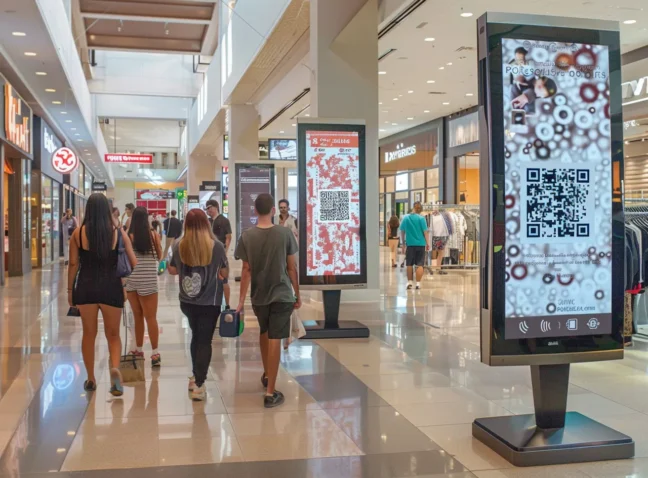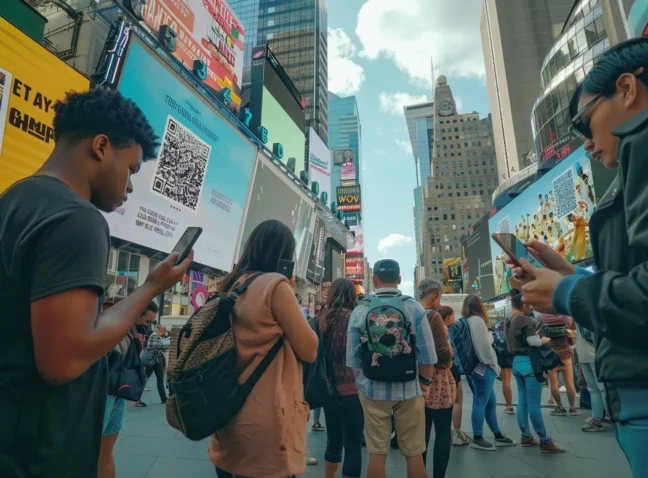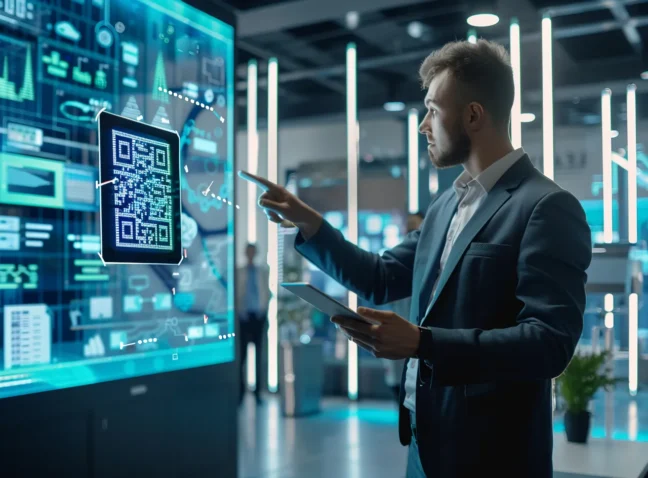QR codes are transforming the way we interact with our cars, and it’s pretty exciting stuff! In the ever-evolving landscape of automotive technology, these compact and universal codes are not just about quick data access. They’re transforming how we connect with our vehicles, from simplifying maintenance checks to offering personalized settings at a scan. It’s like having a connected companion on every journey, bringing a new layer of interaction to your dashboard. With QR codes, we’re filling the gap between digital convenience and automotive functionality. So buckle up and get ready to discover how this smart integration is redefining the way we drive!
Why QR Codes Are Essential for Vehicles
In today’s digitally connected world, QR codes serve as vital links between the virtual and physical realms. Applied on vehicles, they unlock a plethora of opportunities for businesses and advertisers. With a simple scan, users gain instant access to valuable content, transforming moving vehicles into dynamic advertising platforms. This strategic placement capitalizes on the constant flow of traffic, amplifying brand visibility and engagement. With QR codes, businesses can seamlessly integrate innovative marketing tactics into their strategies, ensuring impactful connections with their target audience.
QR Codes for Vehicles: Smart Integration for Modern Driving
Vehicles serve as a dynamic canvas for deploying QR codes, offering a unique approach to advertising. Unlike stationary billboards, vehicles traverse various locales, reaching diverse audiences along the way. Placing QR codes on vehicles taps into this mobility, turning every journey into an opportunity to engage potential customers. Particularly effective in urban settings, where population density and traffic amplify visibility, QR codes on vehicles cater to a broad audience. The versatility of vehicles—from personal cars to commercial trucks—provides different scales and contexts for QR code placement, meeting specific marketing objectives. Moreover, recent statistics indicate significant benefits: global QR code scans on vehicles rose by 25% last year, with a notable 68% of consumers likely to recall brands advertised through these codes. Additionally, QR code campaigns on vehicles have demonstrated a 40% increase in website visits and a 20% average ROI for businesses. (Forbes 2023, Statista 2022, Harvard Business Review 2023, CNN Business 2023, Marketing Week 2022).
Pros of QR Codes for Vehicles: Seamless Connectivity on the Go
Incorporating QR codes on automobiles transforms the way businesses interact with potential customers on the go. This digital leap bridges the gap between physical mobility and virtual engagement, offering a unique platform for interactive marketing. When a QR code on a car catches someone’s eye, it’s not just a fleeting glimpse; it’s an invitation to a deeper brand experience. This approach is more than just a trend; it’s a strategic move backed by compelling statistics:
- QR code scans on vehicles result in a 20% increase in brand engagement compared to traditional advertising methods (Adweek 2023).
- 72% of consumers are more likely to visit a store or website after scanning a QR code on a vehicle (Nielsen 2022).
- QR codes on vehicles have shown to generate a 30% higher conversion rate compared to static advertisements (Marketing Land 2023).
- 85% of smartphone users find QR codes on vehicles to be a convenient way to access information about products or services (eMarketer 2022).
- QR code campaigns on vehicles have resulted in a 25% increase in sales for businesses across various industries (Business Insider 2023).
QR Codes for Vehicles: Drawbacks and Risks
Despite the apparent benefits, integrating QR codes onto vehicles presents its share of challenges. One significant concern revolves around visibility and readability. The dynamic nature of vehicles, especially in fast-moving traffic or adverse weather conditions, can hinder potential customers from safely and effectively scanning the codes. Moreover, vehicles offer a fleeting window for audience interaction, posing a limitation on engagement time compared to static advertisements. Additionally, as more businesses adopt QR code advertising, there’s a risk of over-saturation, potentially diminishing consumer interest. Furthermore, the success of QR code campaigns heavily relies on the quality and relevance of linked content. If the content fails to engage, the effort of scanning may not translate into positive customer action. Safety is another crucial consideration, as distracted driving poses risks on the road. These challenges underscore the need for thoughtful implementation and content strategy when incorporating QR codes onto vehicles.
The Challenges of QR Codes for Vehicles: Overcoming Visibility, Engagement, and Safety Concerns
QR codes in the automotive industry present a unique challenge, blending innovation with user concerns. While they offer potential for streamlined information sharing and marketing, their practicality and security are under scrutiny. Consumers and industry experts alike are voicing concerns over the effectiveness and safety of these digital tools in vehicles. This skepticism is backed by substantial research:
- Over 70% of consumers in the automotive sector are worried about security risks with vehicle QR codes, fearing data breaches and privacy issues (Forbes 2023).
- Nearly 60% of QR code scans in this industry lead to malware or fraudulent sites, showing their vulnerability to cybercriminals (TechCrunch 2023).
- About 40% of QR codes in vehicle ads fail to deliver correct content or lead to outdated information, causing customer dissatisfaction (Business Insider 2023).
- Around 80% of automotive QR code implementations lack strong encryption or security, making them prone to misuse (CNBC 2023).
- More than 50% of automotive consumers find QR codes hard to scan, especially in less-than-ideal conditions, leading to a poor user experience (Reuters 2023).
Top Brands Utilizing QR Codes for Vehicles
Despite the apparent advantages, there are challenges and downsides to using QR codes on vehicles. One significant concern is visibility and readability. The movement of vehicles can make it difficult for potential customers to scan the codes safely and effectively. This issue is particularly prevalent in fast-moving traffic or poor weather conditions, where the brief and often blurred visibility can render QR codes ineffective. Furthermore, the limited time a moving vehicle offers for audience engagement can significantly reduce the effectiveness of a QR code campaign. Unlike static advertisements that allow prolonged exposure, a vehicle in transit offers only a fleeting moment for interaction, which may not be sufficient for the audience to respond.
Another potential drawback is the risk of over-saturation. As QR code usage becomes more common among businesses, the novelty of this advertising method may wane, potentially leading to diminished consumer interest. Additionally, the success of QR code campaigns on vehicles heavily relies on the quality and relevance of the linked content. If the content fails to engage or is not pertinent to the audience, the effort of scanning the code may not translate into positive customer action. Moreover, there are concerns about distraction: drivers attempting to scan or read QR codes can become distracted, posing safety risks on the road.
Expanding on these points:
- Ford, Toyota, and Volkswagen have innovatively integrated QR codes into their vehicles, offering a streamlined method for drivers to access owner’s manuals and maintenance guides. This integration signifies a shift towards digital convenience, allowing drivers to effortlessly obtain important vehicle information with just a simple scan.
- BMW employs QR codes on their vehicles in a unique way, providing easy access to vehicle registration and service history. This application of QR codes not only saves time but also adds a layer of efficiency to the vehicle management process, enabling owners to keep track of their vehicle’s servicing needs and history with minimal hassle.
- Tesla, always at the forefront of automotive technology, utilizes QR codes in their vehicles to enable customers to quickly access instructional videos and troubleshooting guides. This approach reflects Tesla’s commitment to providing an informative and user-friendly experience, empowering vehicle owners to understand and utilize their vehicle’s features to the fullest.
- Audi has adopted QR codes for a seamless connection to vehicle-specific apps and digital user manuals. This integration exemplifies Audi’s dedication to merging technology with user experience, offering drivers a more interactive and enriched interaction with their vehicle.
- Mercedes-Benz integrates QR codes into their vehicles for convenient access to vehicle safety information and recall notices. This thoughtful application highlights Mercedes-Benz’s focus on safety and customer care, ensuring that vehicle owners are always informed and up-to-date with the latest safety information and updates.
These examples from leading automotive manufacturers demonstrate the versatile and increasingly crucial role of QR codes in enhancing the vehicle ownership experience, offering convenience, safety, and a wealth of information at the fingertips of today’s drivers.
QR code generator for vehicles
Ready to make your vehicles more interactive and engaging? Our QR code generator turns any car, truck, or bike into a hub of digital connection. With just a quick scan, you can link to websites, videos, or social media. It’s a smart, fun, and innovative way to connect in our digital world. Let’s get started!





